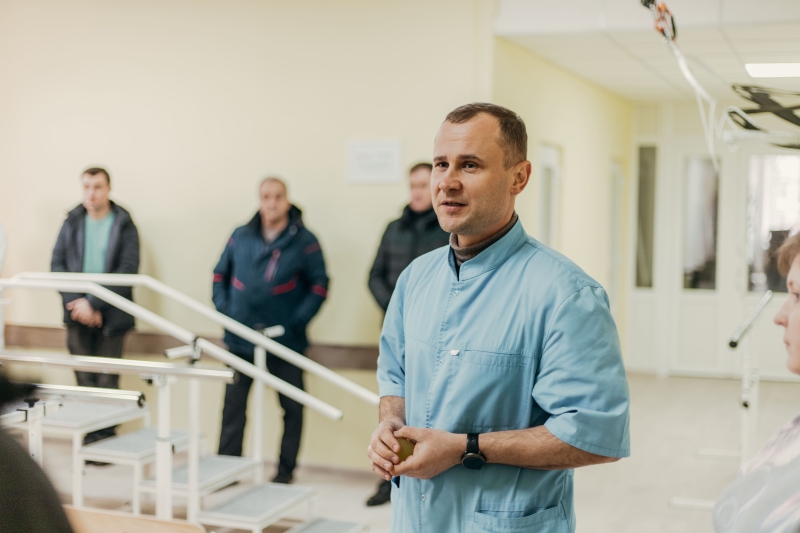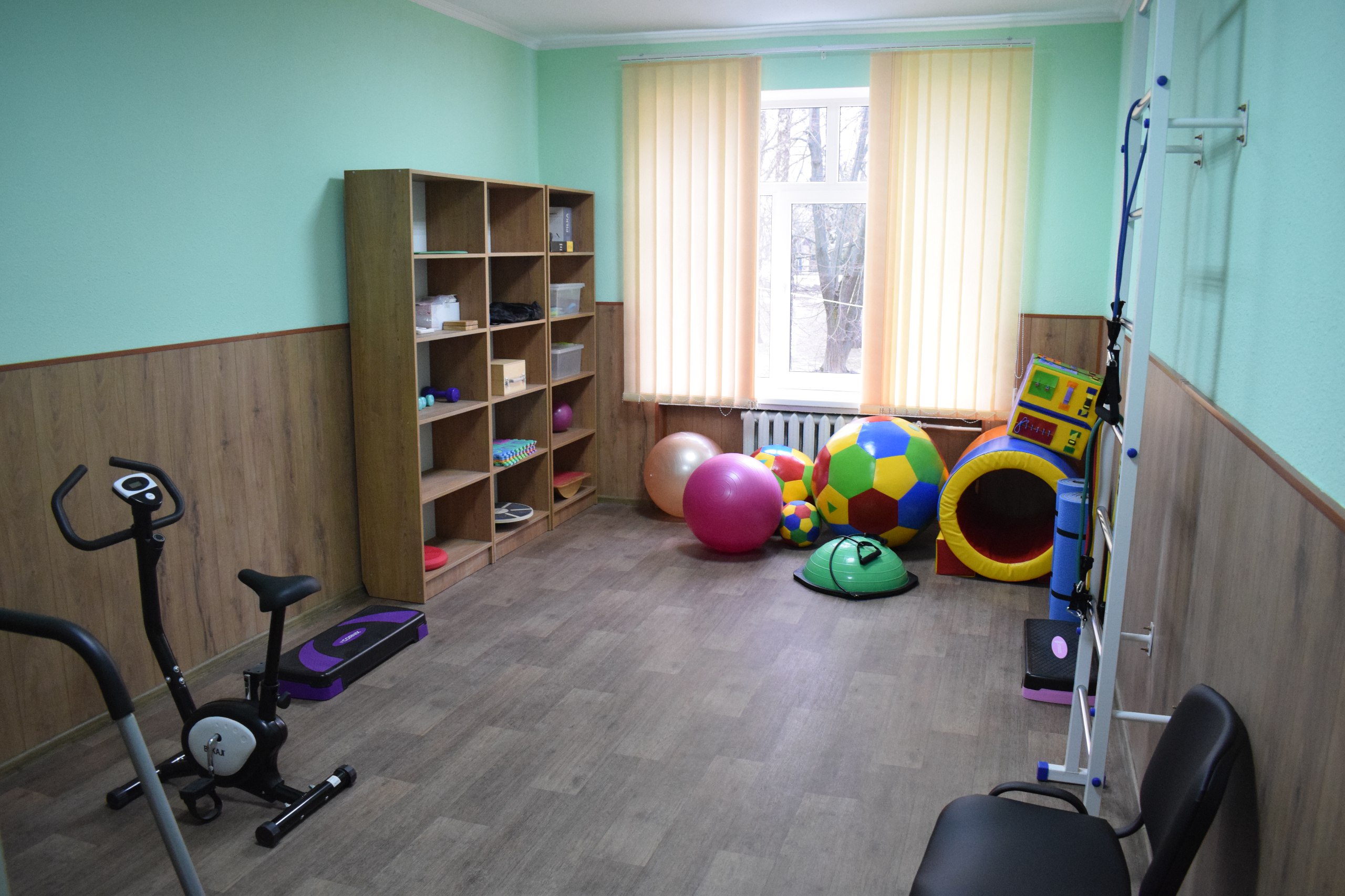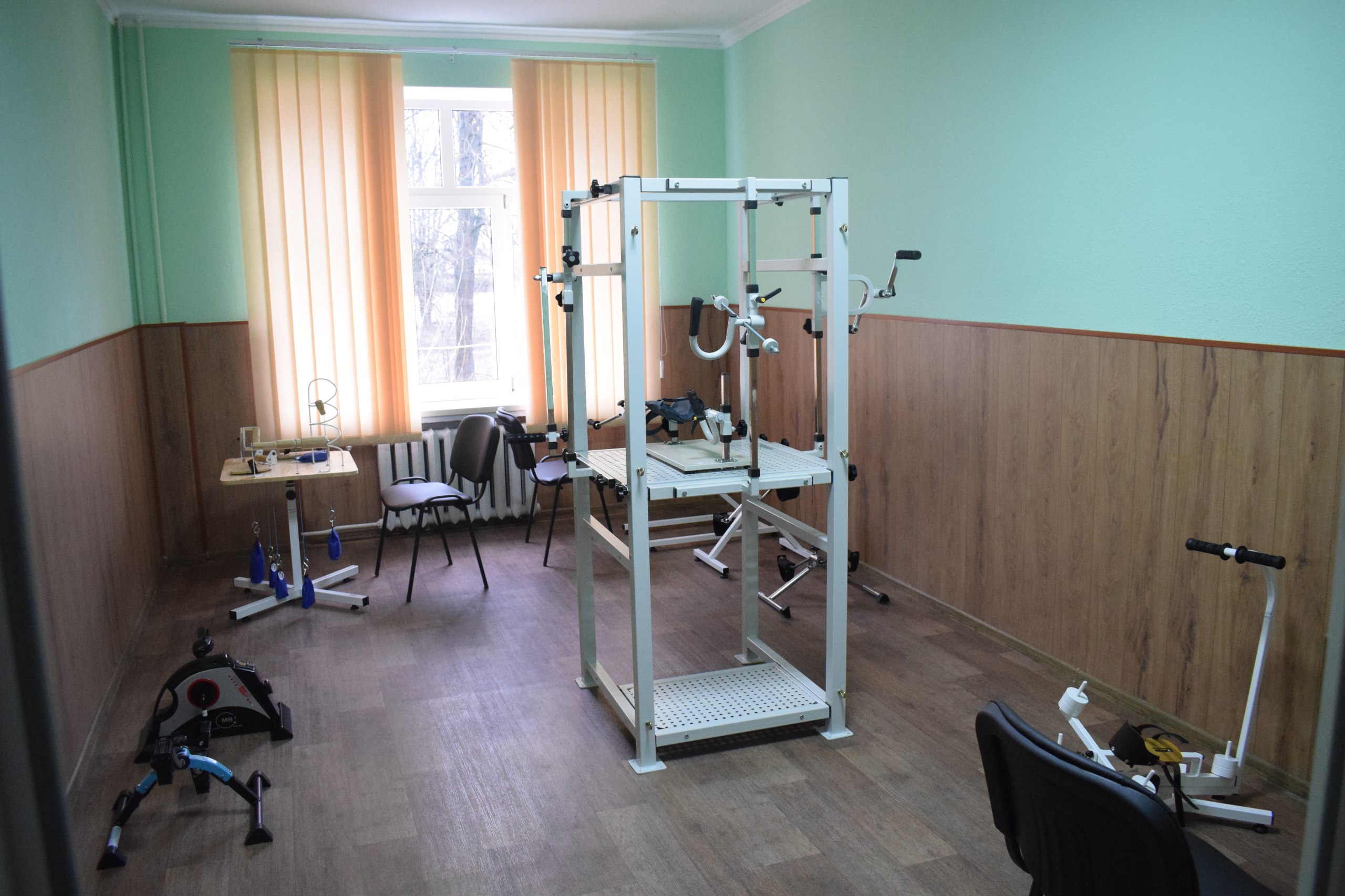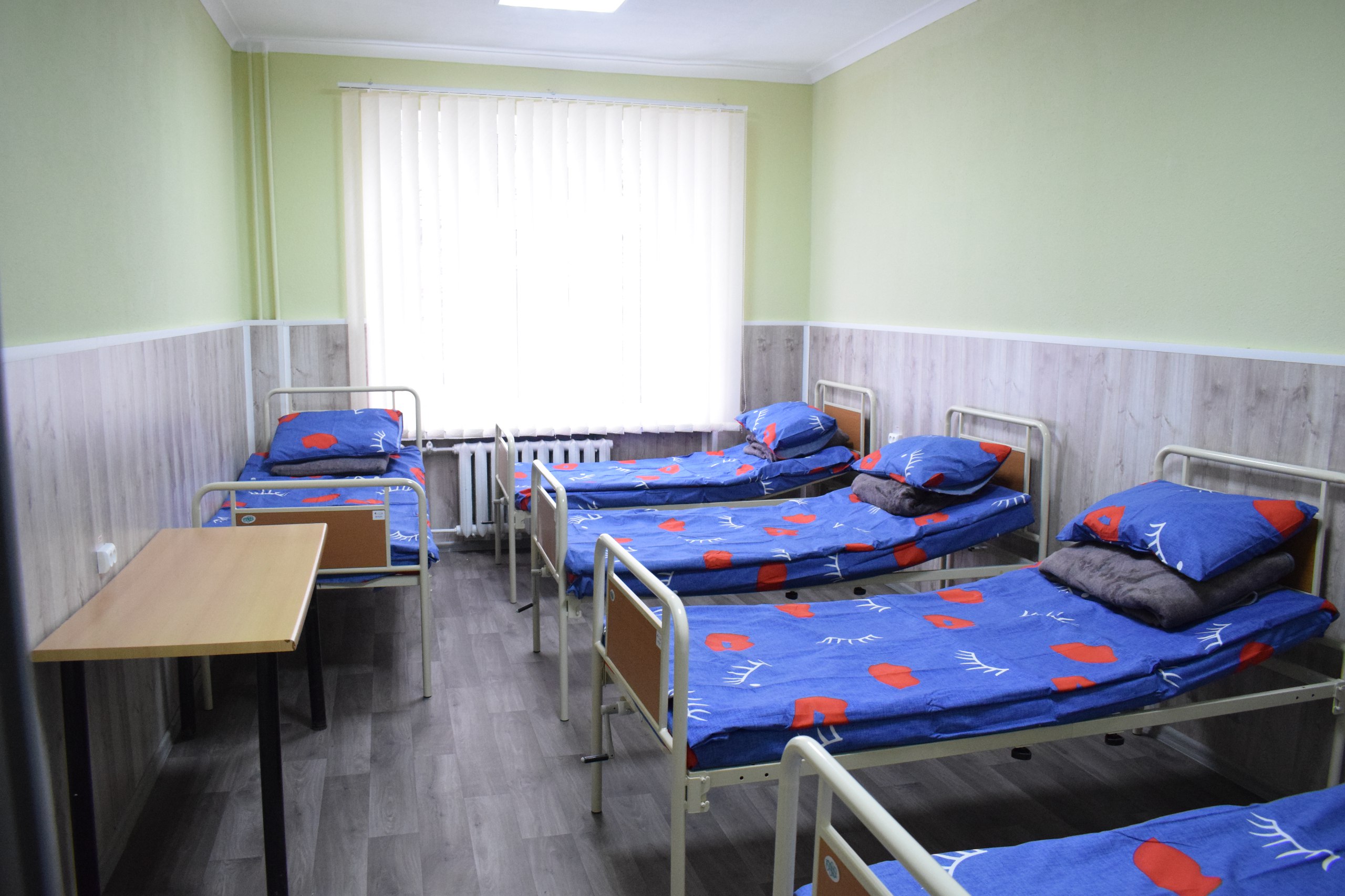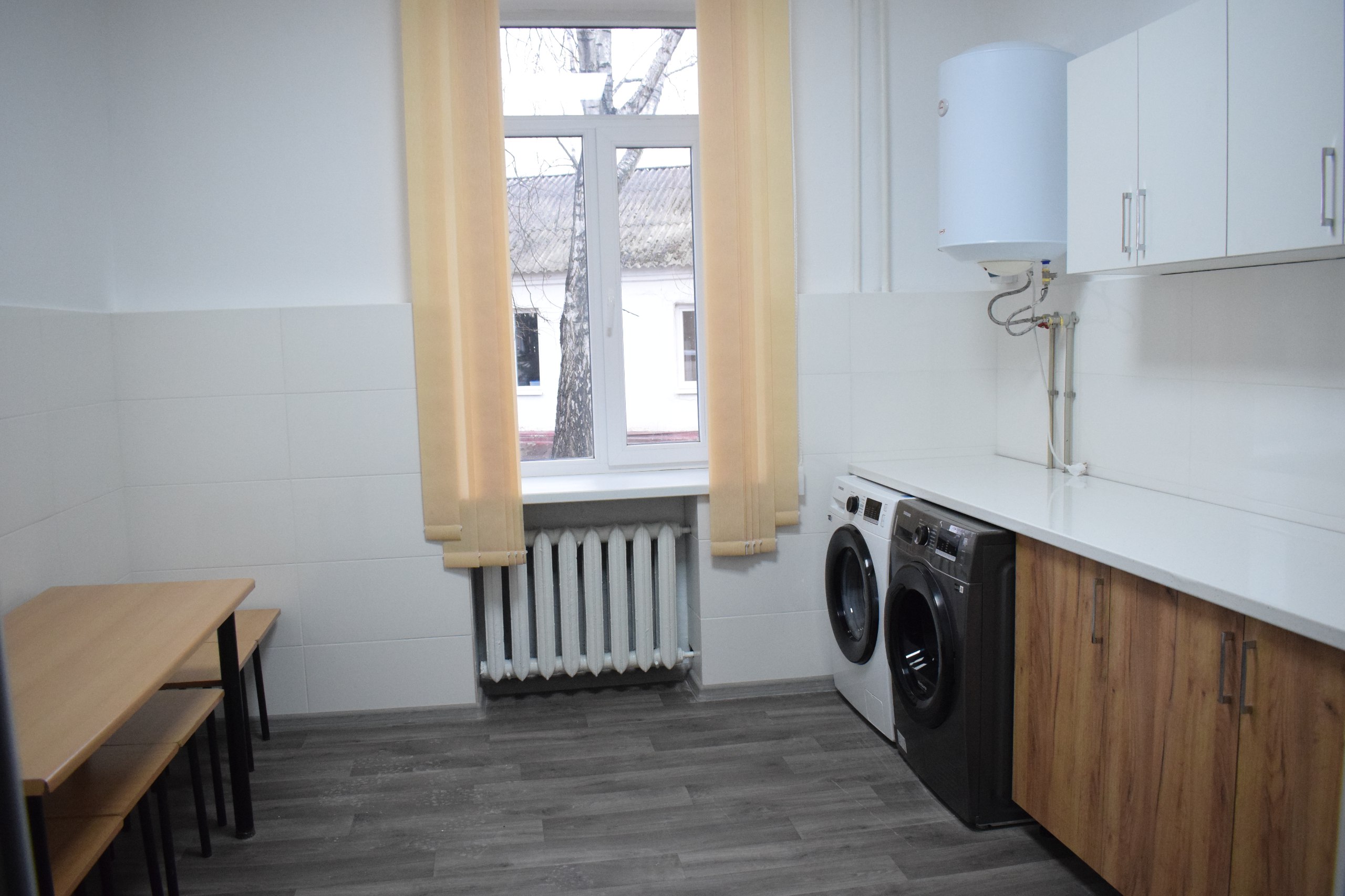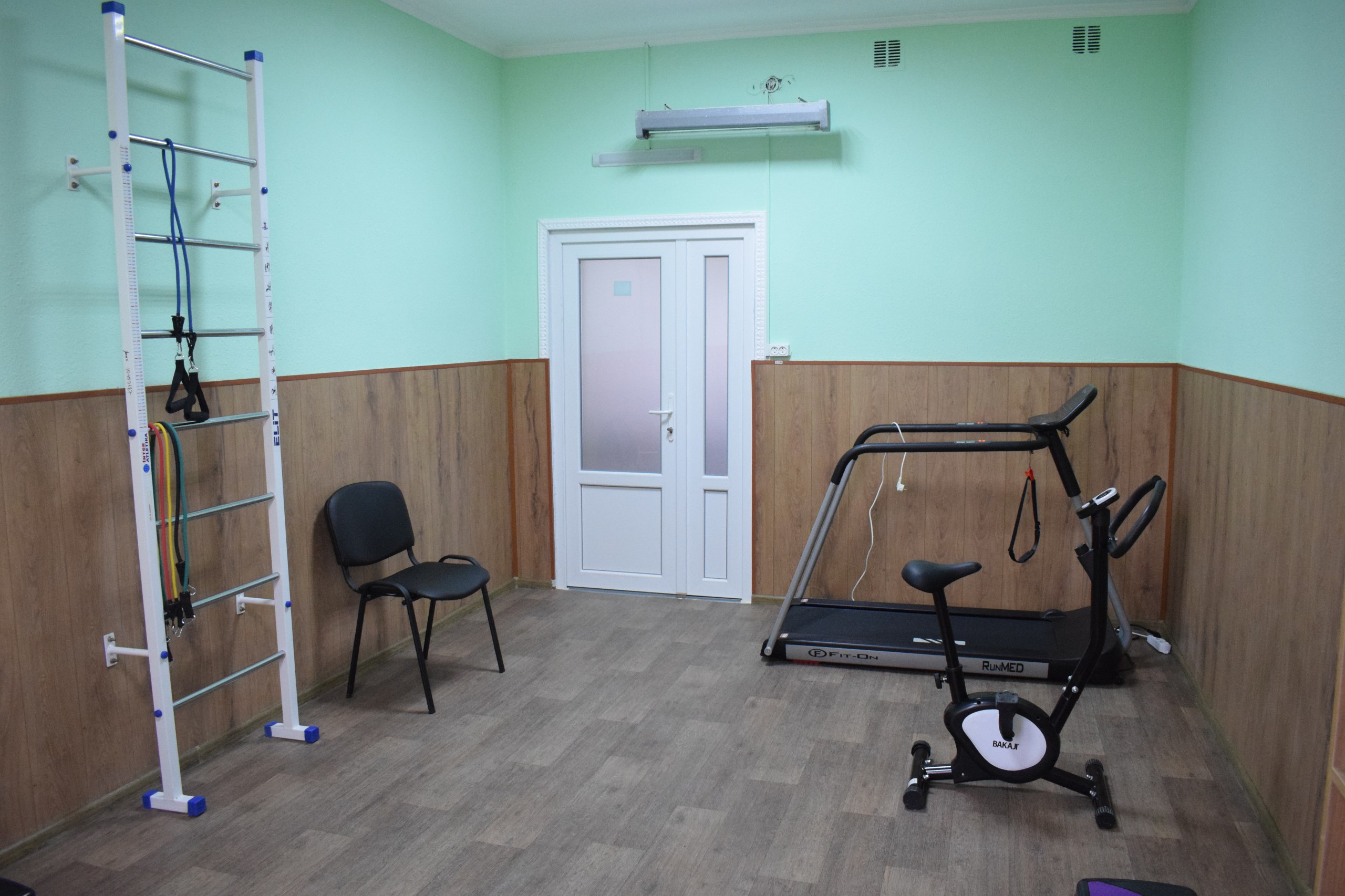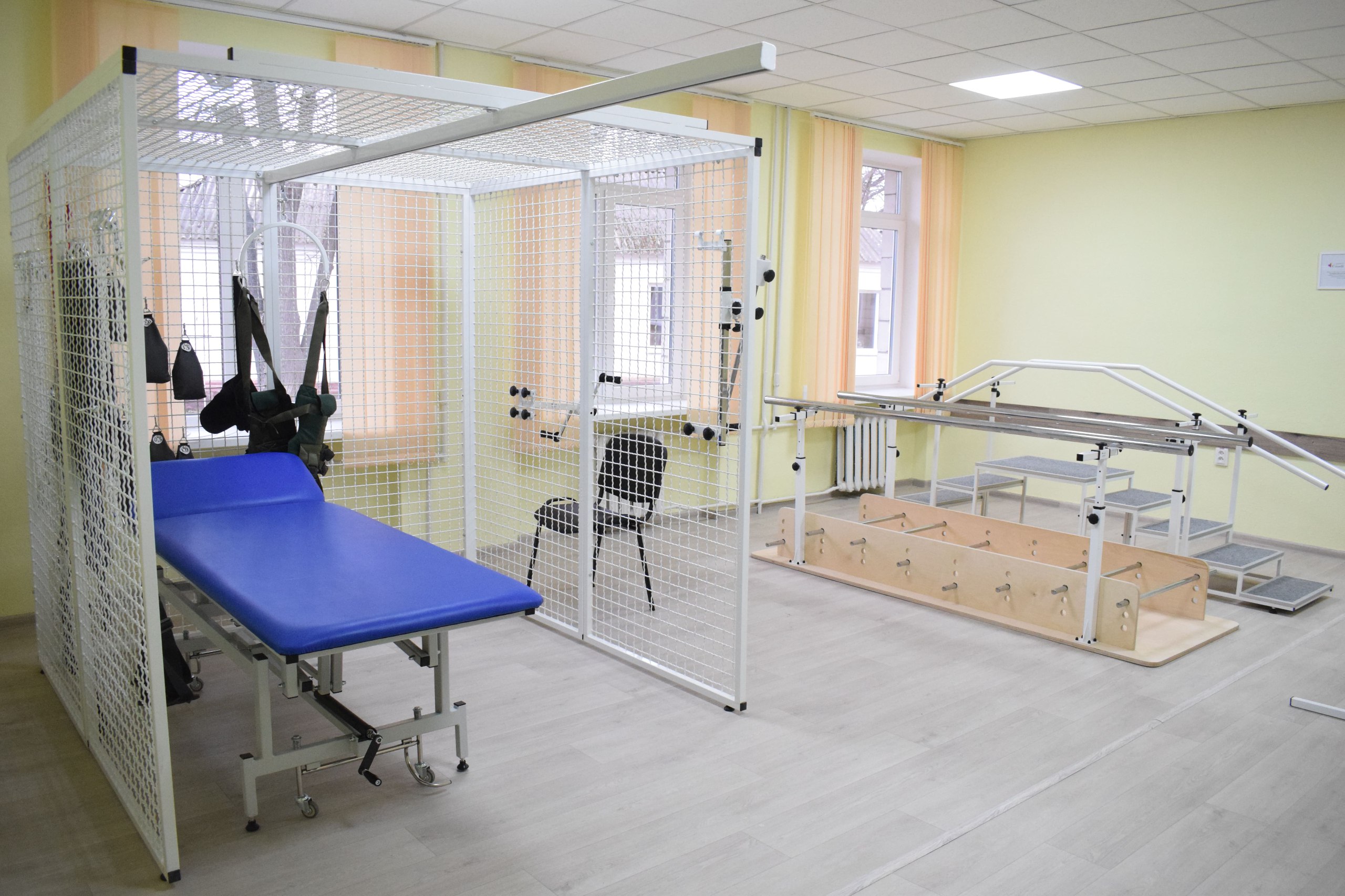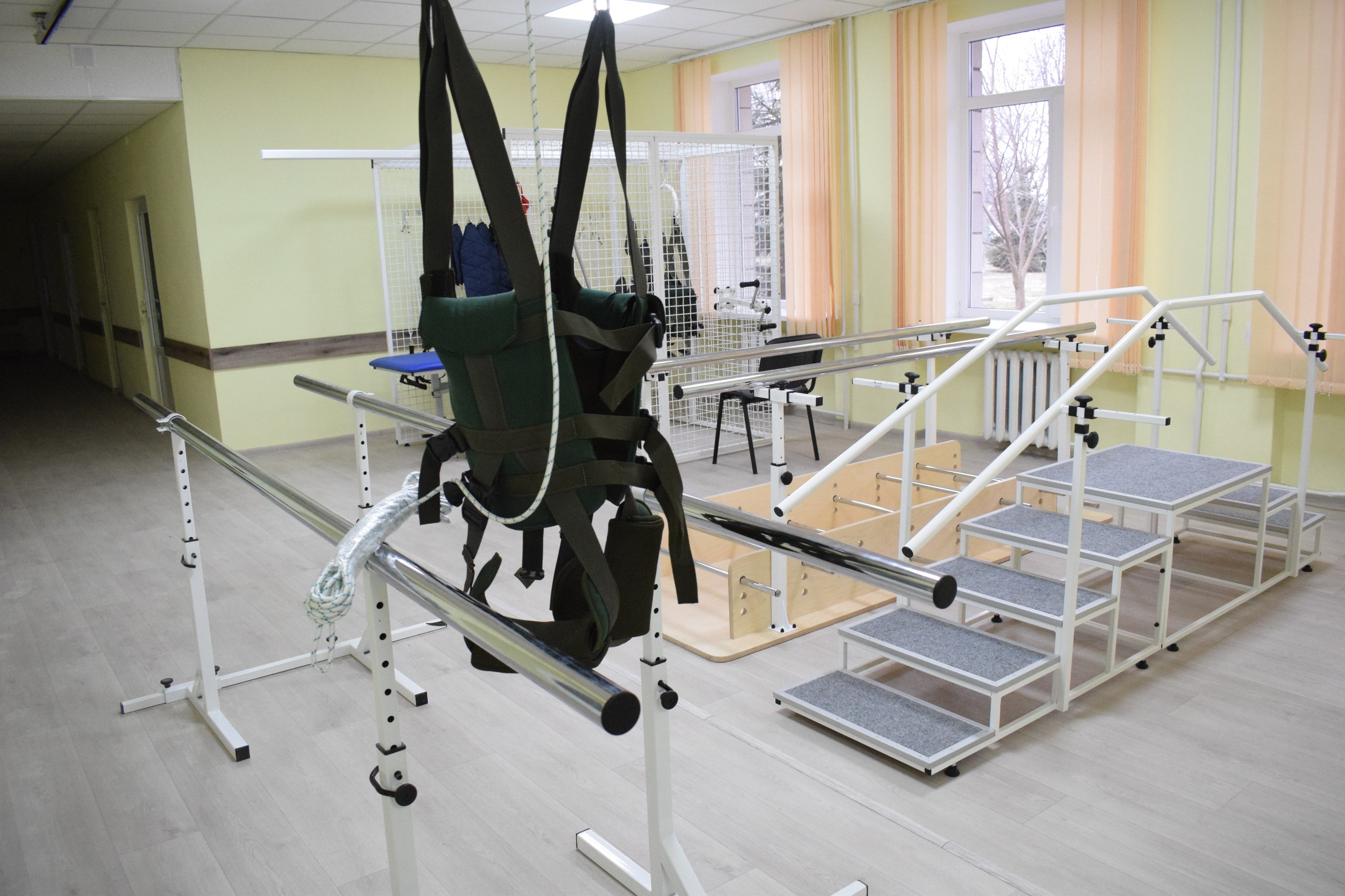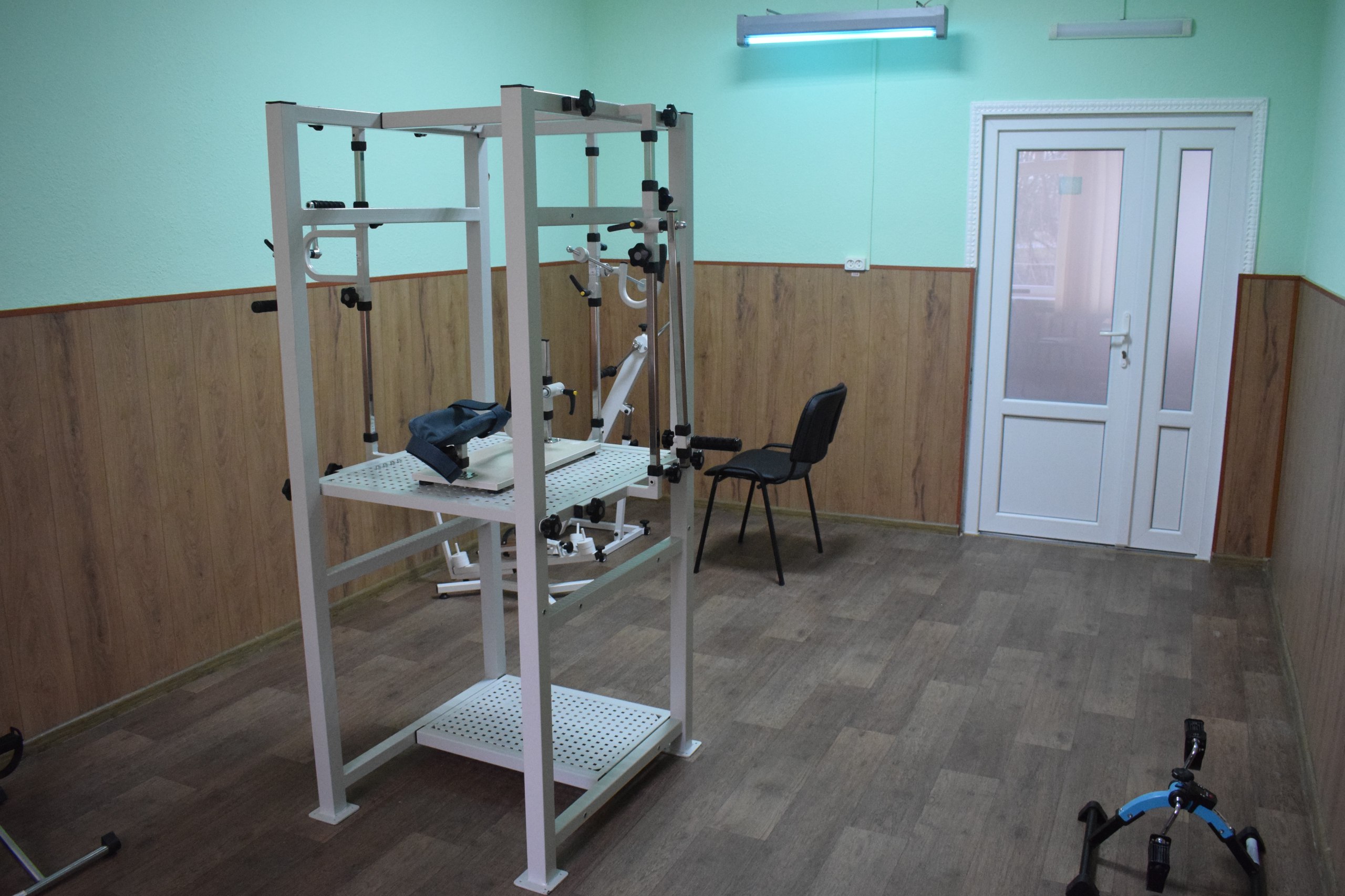Prioritising the places and people that need it the most
In the Right Place
Ensuring proper living conditions and rehabilitation of IDPs, veterans and persons with disabilities
Our project is a synergy that has united everyone: the government, residents, civil society, the hospital team, and businesses. Together, we have proven that, with joint efforts, we can not only dream of change but also make a real difference in our community. This is more than just cooperation — it’s proof that unity shapes the future.
Ukraine
Local
Orzhitsia Settlement,Poltava Region,Ukraine
Mainly rural
It refers to a physical transformation of the built environment (hard investment)
Yes
2024-03-15
No
No
No
As an individual partnership with other persons/organisation(s)
The project aims to create comfortable living conditions for internally displaced persons (IDPs), support the social integration of people with disabilities, and provide rehabilitation for veterans, individuals with disabilities, and patients recovering from cardiovascular diseases and surgeries. This is achieved through the acquisition of medical and rehabilitation equipment, ensuring long-term social recovery for these groups.
Target Groups: IDPs, veterans, individuals with disabilities, and patients in need of rehabilitation.
Objectives:
Improve access to rehabilitation services at the local level, reducing the need for long-distance travel.
Renovate and repurpose an unused medical facility, minimizing construction waste and environmental impact.
Equip the center with modern medical and rehabilitation tools to enhance patient care.
Achieved Outcomes:
A fully renovated rehabilitation center in an ecologically clean area, featuring 20-bed wards, physician offices, and rest areas.
Improved accessibility through mobility aids and rehabilitation equipment for those in need.
Enhanced sustainability by reducing resource consumption and waste.
Strengthened community development through collaboration between international donors, local authorities, and residents.
Target Groups: IDPs, veterans, individuals with disabilities, and patients in need of rehabilitation.
Objectives:
Improve access to rehabilitation services at the local level, reducing the need for long-distance travel.
Renovate and repurpose an unused medical facility, minimizing construction waste and environmental impact.
Equip the center with modern medical and rehabilitation tools to enhance patient care.
Achieved Outcomes:
A fully renovated rehabilitation center in an ecologically clean area, featuring 20-bed wards, physician offices, and rest areas.
Improved accessibility through mobility aids and rehabilitation equipment for those in need.
Enhanced sustainability by reducing resource consumption and waste.
Strengthened community development through collaboration between international donors, local authorities, and residents.
Social responsibility
Disability
Support
Inclusion
Reconstruction
In our project, we are renovating a children's ward that has not been used since 2020. This choice significantly decreased the demand for new building materials, minimized construction waste, and alleviated pressure on the local landfill. By reusing an existing structure, we effectively utilized available resources and reduced our environmental impact.
Our project has a social impact. The newly renovated rehabilitation center now provides essential services not just to local residents (approximately 15,000 people) but also to 1,246 internally displaced persons. Additionally, we have created 10 new jobs, helping to boost employment opportunities in the region.
By establishing local rehabilitation services, we have enabled residents to receive necessary care without having to travel long distances (50-80 km) to other centers.
Our modern rehabilitation center includes four spacious wards (with a total of 20 beds), specialist consultation rooms, sanitary facilities, and a kitchen. The facility is conveniently located on the ground floor, ensuring easy access for all patients. Moreover, its location in an environmentally clean area enhances patient comfort and promotes a more effective rehabilitation process.
By using our own resources to fund the renovation, we have decreased our dependence on outside investments. This strategy has enabled us to channel more funds into enhancing roads and infrastructure. As a result, our project stands as a model for sustainable development and responsible resource management. Funding the renovation with our own resources reduced the need for further funding.
Our project has a social impact. The newly renovated rehabilitation center now provides essential services not just to local residents (approximately 15,000 people) but also to 1,246 internally displaced persons. Additionally, we have created 10 new jobs, helping to boost employment opportunities in the region.
By establishing local rehabilitation services, we have enabled residents to receive necessary care without having to travel long distances (50-80 km) to other centers.
Our modern rehabilitation center includes four spacious wards (with a total of 20 beds), specialist consultation rooms, sanitary facilities, and a kitchen. The facility is conveniently located on the ground floor, ensuring easy access for all patients. Moreover, its location in an environmentally clean area enhances patient comfort and promotes a more effective rehabilitation process.
By using our own resources to fund the renovation, we have decreased our dependence on outside investments. This strategy has enabled us to channel more funds into enhancing roads and infrastructure. As a result, our project stands as a model for sustainable development and responsible resource management. Funding the renovation with our own resources reduced the need for further funding.
The rehabilitation center features bright, spacious rooms with 20 beds, comfortable doctors' offices, and rest areas for patients. Modern construction materials have been used, making the space safe, convenient, and pleasant for people to stay in. The design and materials enhance both functionality and comfort, meeting the objective of providing a high-quality experience for patients and medical staff.
Valuing Diversity – The project encompasses various groups of the population, including internally displaced persons (IDPs), veterans, people with disabilities, and patients with chronic and acute illness . This ensures equal access to rehabilitation services for all who need them, regardless of financial status.
Securing Accessibility – The hospital has received functional medical beds, mobility aids for people with disabilities, and renovated facilities, all of which contribute to the comfort of patients with mobility impairments and other needs. The department is located on the first floor, which makes it easier for patients with limited mobility to access. The adapted restrooms, special exercise equipment, and wide doorways follow the principles of universal design. The facility includes a ramp, ensuring uninterrupted access for individuals with mobility impairments and disabilities.
Affordability – With support from international grants, local budgets, and funding from the medical institution, the project has expanded to offer accessible rehabilitation services to the community at no extra cost to patients. The opening of the department within the community eliminates the need to travel to distant cities, improving access to rehabilitation and reducing patient expenses.
Securing Accessibility – The hospital has received functional medical beds, mobility aids for people with disabilities, and renovated facilities, all of which contribute to the comfort of patients with mobility impairments and other needs. The department is located on the first floor, which makes it easier for patients with limited mobility to access. The adapted restrooms, special exercise equipment, and wide doorways follow the principles of universal design. The facility includes a ramp, ensuring uninterrupted access for individuals with mobility impairments and disabilities.
Affordability – With support from international grants, local budgets, and funding from the medical institution, the project has expanded to offer accessible rehabilitation services to the community at no extra cost to patients. The opening of the department within the community eliminates the need to travel to distant cities, improving access to rehabilitation and reducing patient expenses.
1. Access to Quality Healthcare: Local residents can receive rehabilitation services in their hometown without having to travel up to 50 km to the nearest hospital, especially patients after a stroke.
2. Improving the Quality of Life for People with Disabilities and Veterans: Specialized equipment improves rehabilitation conditions.
3. Creation of New Jobs: Ten new jobs have been created.
4. Strengthening Social Cohesion in the Community: The community identified the need to renovate the rehabilitation center’s premises through a survey of local residents. This is an example of how local residents can influence local authorities’ decision-making and adjust development projects.
5. Long-Term Prospects for the Future: The community plans to scale up the already implemented project, expand services, and attract more resources, ensuring sustainable development of the healthcare system.
6. Opportunity for Family Members to Participate in Rehabilitation: Since the center is located within the community, it allows family members of patients to be involved in the rehabilitation process. Relatives can assist with care and learn proper caregiving techniques to continue rehabilitation at home.
2. Improving the Quality of Life for People with Disabilities and Veterans: Specialized equipment improves rehabilitation conditions.
3. Creation of New Jobs: Ten new jobs have been created.
4. Strengthening Social Cohesion in the Community: The community identified the need to renovate the rehabilitation center’s premises through a survey of local residents. This is an example of how local residents can influence local authorities’ decision-making and adjust development projects.
5. Long-Term Prospects for the Future: The community plans to scale up the already implemented project, expand services, and attract more resources, ensuring sustainable development of the healthcare system.
6. Opportunity for Family Members to Participate in Rehabilitation: Since the center is located within the community, it allows family members of patients to be involved in the rehabilitation process. Relatives can assist with care and learn proper caregiving techniques to continue rehabilitation at home.
Donor (International Organization for Migration):
Role: Providing financial support and expertise in creating sustainable aid models.
Engagement: Procurement of equipment, training activities.
Added value: Their financial support and strategic leadership enhanced the project's effectiveness.
Medical Facility:
Role: Worked closely with our team on the daily development of projects.
Engagement: Intensively collaborated, exchanging operational experiences.
Added value: Their practical involvement ensured seamless implementation and enriched the project.
Community Residents:
Role: Main beneficiaries receiving quality medical care.
Engagement: Actively participated in shaping the community's development.
Added value: Their participation created a dynamic, self-aware community that contributed to steady growth.
Displaced Families (Beneficiaries):
Role: Received conditions for temporary accommodation.
Engagement: Actively utilized the opportunities provided by the project.
Added value: The project provided a fresh start, fostering integration and a sense of belonging.
Municipalities:
Role: Local council, responsible for implementing and overseeing the project.
Engagement: Actively collaborated, supported the initiative, monitored progress, and carried out an information campaign.
Added value: Their financial initiative was crucial for the project's realization.
Role: Providing financial support and expertise in creating sustainable aid models.
Engagement: Procurement of equipment, training activities.
Added value: Their financial support and strategic leadership enhanced the project's effectiveness.
Medical Facility:
Role: Worked closely with our team on the daily development of projects.
Engagement: Intensively collaborated, exchanging operational experiences.
Added value: Their practical involvement ensured seamless implementation and enriched the project.
Community Residents:
Role: Main beneficiaries receiving quality medical care.
Engagement: Actively participated in shaping the community's development.
Added value: Their participation created a dynamic, self-aware community that contributed to steady growth.
Displaced Families (Beneficiaries):
Role: Received conditions for temporary accommodation.
Engagement: Actively utilized the opportunities provided by the project.
Added value: The project provided a fresh start, fostering integration and a sense of belonging.
Municipalities:
Role: Local council, responsible for implementing and overseeing the project.
Engagement: Actively collaborated, supported the initiative, monitored progress, and carried out an information campaign.
Added value: Their financial initiative was crucial for the project's realization.
Medical professionals played a key role in identifying the necessary medical equipment, mobility aids, and functional beds to ensure effective treatment and improve patients' quality of life.
Social workers and representatives of CO, particularly Light of Hope, contributed by securing international funding and ensuring that the project met the needs of IDPs, veterans, and people with disabilities.
Engineers and architects were responsible for renovating the hospital facilities and ensuring compliance with safety, accessibility, and functionality standards.
Local government and hospital administrators managed financial resources, secured additional funding, and ensured compliance with regulations. Their efforts helped expand the project from an initial concept into a full-scale rehabilitation department.
The interaction of these fields allowed for the effective implementation of the project: medical professionals identified patient needs, engineers adapted the infrastructure and social workers ensured inclusivity. The combined efforts expanded the project’s budget from €10,165 to €47,159 significantly increasing its scale and social impact.
Social workers and representatives of CO, particularly Light of Hope, contributed by securing international funding and ensuring that the project met the needs of IDPs, veterans, and people with disabilities.
Engineers and architects were responsible for renovating the hospital facilities and ensuring compliance with safety, accessibility, and functionality standards.
Local government and hospital administrators managed financial resources, secured additional funding, and ensured compliance with regulations. Their efforts helped expand the project from an initial concept into a full-scale rehabilitation department.
The interaction of these fields allowed for the effective implementation of the project: medical professionals identified patient needs, engineers adapted the infrastructure and social workers ensured inclusivity. The combined efforts expanded the project’s budget from €10,165 to €47,159 significantly increasing its scale and social impact.
During the project's implementation, safer modern construction materials were utilized instead of traditional ones. Additionally, modern medical equipment is employed during treatment procedures.
We have equipped a simulation ergotherapy room that helps restore lost motor functions and readapts people to normal life, helping them achieve maximum independence and self-sufficiency in daily activities.
We have equipped a simulation ergotherapy room that helps restore lost motor functions and readapts people to normal life, helping them achieve maximum independence and self-sufficiency in daily activities.
1.Needs Assessment and Planning
-Surveys and consultations with stakeholders (patients, medical staff, local authorities, and community organizations).
-An audit of the hospital’s material and technical resources.
-Identification of priority areas for improving living conditions and rehabilitation services.
2.Inclusive and Multidisciplinary Approach
-Collaboration with rehabilitation specialists, architects, social workers, and medical personnel.
-Implementation of universal design principles in facility modernization.
-Adherence to accessibility standards when equipping residential and medical spaces.
3.Partnerships and Community Engagement
-Additional resources to be secured for project implementation.
-Increased public awareness of the challenges and needs of displaced persons, veterans, and individuals with disabilities.
-Ensured the project's long-term sustainability and support.
4.Monitoring and Evaluation
-Regular working group meetings.
-Beneficiary satisfaction assessments (surveys, focus groups).
-Analysis of financial and resource efficiency.
5.Sustainability and Long-Term Impact
-Staff training on rehabilitation and working with people with special needs.
-Implementation of support mechanisms and additional financial resource mobilization.
-Development of proposals for further transformation of the hospital into a medical-social rehabilitation center.
-Surveys and consultations with stakeholders (patients, medical staff, local authorities, and community organizations).
-An audit of the hospital’s material and technical resources.
-Identification of priority areas for improving living conditions and rehabilitation services.
2.Inclusive and Multidisciplinary Approach
-Collaboration with rehabilitation specialists, architects, social workers, and medical personnel.
-Implementation of universal design principles in facility modernization.
-Adherence to accessibility standards when equipping residential and medical spaces.
3.Partnerships and Community Engagement
-Additional resources to be secured for project implementation.
-Increased public awareness of the challenges and needs of displaced persons, veterans, and individuals with disabilities.
-Ensured the project's long-term sustainability and support.
4.Monitoring and Evaluation
-Regular working group meetings.
-Beneficiary satisfaction assessments (surveys, focus groups).
-Analysis of financial and resource efficiency.
5.Sustainability and Long-Term Impact
-Staff training on rehabilitation and working with people with special needs.
-Implementation of support mechanisms and additional financial resource mobilization.
-Development of proposals for further transformation of the hospital into a medical-social rehabilitation center.
Instead of investing in the construction of new buildings, we adapted a former children's ward that was no longer in use. This demonstrates that even in small communities, existing facilities can be repurposed to meet new needs, reducing infrastructure costs.
In communities where the need for military rehabilitation is growing, it is important to create tailored approaches to their treatment. Our experience can be valuable for communities planning to establish rehabilitation centers, as we have demonstrated how these services can be integrated even with limited resources.
In communities where the need for military rehabilitation is growing, it is important to create tailored approaches to their treatment. Our experience can be valuable for communities planning to establish rehabilitation centers, as we have demonstrated how these services can be integrated even with limited resources.
Ensuring accessible and quality healthcare is an urgent issue, especially in rural and remote areas, where there is a shortage of medical services and specialists, such as therapists. A particularly pressing need is rehabilitation for people who have suffered a stroke or injury, as it helps them return to normal life.
Social inclusion and equal opportunities are also important aspects. It is necessary to integrate veterans, people with disabilities, and internally displaced persons (IDPs) into the social life of the community, creating barrier-free environments in medical facilities and providing equal opportunities for all citizens, regardless of their place of residence.
The war has had a significant impact on these issues. Supporting veterans and military personnel who require physical and psychological rehabilitation is a key part of ensuring their social well-being. It is also crucial to assist IDPs who find themselves in difficult life circumstances due to the conflict, providing them with the necessary support and resources for adaptation.
Social inclusion and equal opportunities are also important aspects. It is necessary to integrate veterans, people with disabilities, and internally displaced persons (IDPs) into the social life of the community, creating barrier-free environments in medical facilities and providing equal opportunities for all citizens, regardless of their place of residence.
The war has had a significant impact on these issues. Supporting veterans and military personnel who require physical and psychological rehabilitation is a key part of ensuring their social well-being. It is also crucial to assist IDPs who find themselves in difficult life circumstances due to the conflict, providing them with the necessary support and resources for adaptation.
The project has enhanced rehabilitation services for internally displaced persons (IDPs), veterans, individuals with disabilities, and patients in need of long-term recovery, ensuring equal access to quality healthcare.
Outcomes:
A fully renovated rehabilitation center in an ecologically clean area, featuring 20-bed wards, physician offices, and rest areas.
Improved accessibility through mobility aids and rehabilitation equipment for those in need.
Enhanced sustainability by reducing resource consumption and waste.
Strengthened community development through collaboration between international donors, local authorities, and residents
Direct beneficiaries (patients, IDPs, and people with disabilities) gain improved mobility, faster recovery, and better quality of life.
Indirect beneficiaries (families, healthcare workers, and the local community) benefit from stronger healthcare infrastructure and economic growth.
Increased social inclusion and reintegration opportunities for people with disabilities and veterans.
This project not only improves healthcare accessibility but also fosters social and economic stability in the community.
Outcomes:
A fully renovated rehabilitation center in an ecologically clean area, featuring 20-bed wards, physician offices, and rest areas.
Improved accessibility through mobility aids and rehabilitation equipment for those in need.
Enhanced sustainability by reducing resource consumption and waste.
Strengthened community development through collaboration between international donors, local authorities, and residents
Direct beneficiaries (patients, IDPs, and people with disabilities) gain improved mobility, faster recovery, and better quality of life.
Indirect beneficiaries (families, healthcare workers, and the local community) benefit from stronger healthcare infrastructure and economic growth.
Increased social inclusion and reintegration opportunities for people with disabilities and veterans.
This project not only improves healthcare accessibility but also fosters social and economic stability in the community.


